Disclosure: This article contains affiliate links. We may earn a commission from purchases at no extra cost to you, which helps our travel content.
When I swapped my marketing slides for pottery wheels last year, I never imagined my ceramics journey would lead me to Beijing's hutongs hunting for the perfect clay teapot. But here I am, covered in dried clay specks, chopsticks in hand, navigating the labyrinthine alleys where Beijing's real food scene thrives. Forget the glossy tourist traps—I'm talking about the tiny hole-in-the-wall spots where locals line up before dawn, the family-run kitchens where recipes have been passed down for generations, and where the perfect dumpling fold is considered nothing short of an art form. After all, what better way to understand a culture's craftsmanship than through both its ceramics and its cuisine?
Northern Comfort: Dumplings & Noodles That Tell Stories
In Beijing's Xicheng district, hidden behind the Drum Tower, I found Lao Zhang's Handmade Noodles—a tiny six-table spot where Mr. Zhang has been pulling noodles for 40+ years. His fingers dance through the dough like a master potter shapes clay, transforming simple ingredients into strands of perfectly chewy noodles. The zhajiang mian (noodles with bean sauce) arrive in bowls so well-loved they've developed a natural patina that reminds me of my favorite tea vessels.
Two blocks east, Hui Hui Jiaozi serves dumplings with wrappers so thin they're practically translucent. The owner, Auntie Liu, noticed my fascination with her pleating technique and insisted on teaching me—her hands moving with the same intuitive grace I've seen in master potters. 'Not too tight, not too loose,' she instructed in broken English, laughing at my clumsy attempts. By my third try, she nodded approval—the highest praise in a craft culture.
For breakfast, join the line at Qing Feng Steamed Dumpling Shop on Dashilan Street by 6:30am. Their baozi (steamed buns) come served in traditional bamboo steamers that I couldn't help photographing for my ceramics inspiration journal. I used my food thermometer to check when they'd cooled enough to eat—those first bites are worth the risk, but the filling is volcano-hot!
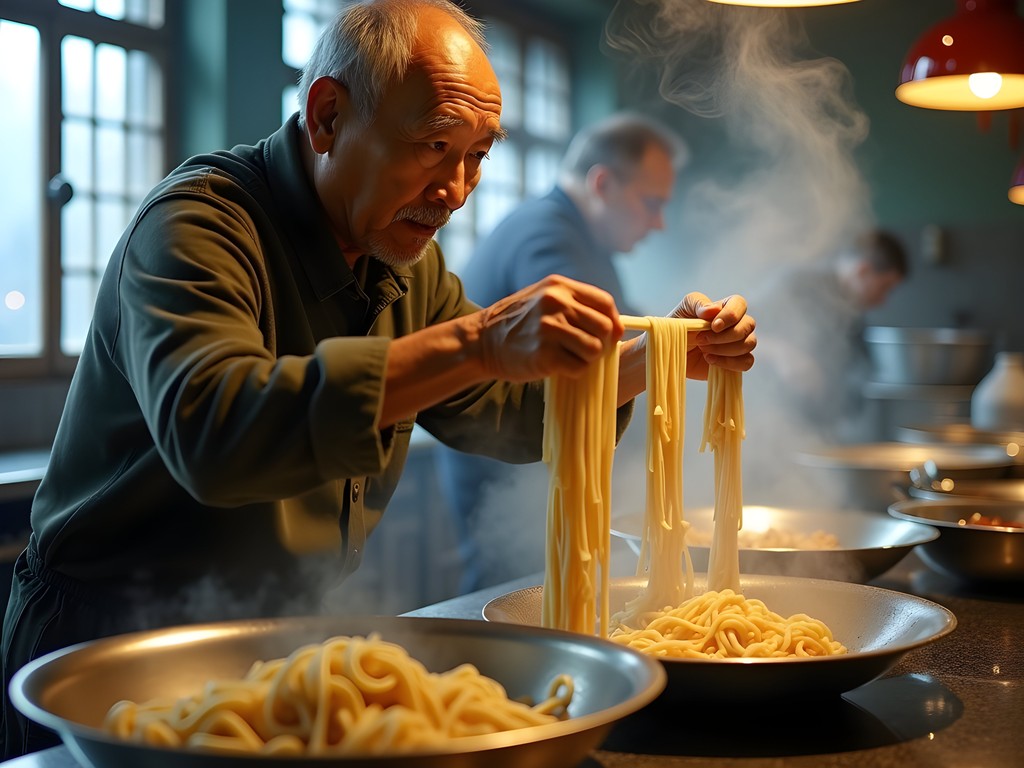

💡 Pro Tips
- Arrive at dumpling spots before 11:30am or after 1:30pm to avoid the worst lunch crowds
- Look for restaurants where the menu is ONLY in Chinese—that's where the magic happens
- Always order what the table next to you is having if it looks good—point and smile works wonders
Duck Dynasty: Beyond the Tourist Peking Duck Experience
Everyone knows Beijing duck, but few travelers venture beyond the famous Quanjude or Dadong chains. My ceramicist's curiosity about traditional cooking vessels led me to Liqun Roast Duck in a crumbling hutong that I almost walked past three times. The duck here isn't just food—it's performance art, with chefs wielding cleavers that have developed perfect balance from decades of use, much like my favorite trimming tools.
The real revelation was Siji Minfu near Dongsi Station, where they roast ducks in traditional clay ovens rather than stainless steel. The difference in flavor is remarkable—the clay imparts a subtle earthiness that metal can never achieve. I spent an embarrassing amount of time examining their ovens and asking technical questions that my limited Mandarin couldn't fully express. The head chef eventually brought out his digital translation device so we could have a proper conversation about firing temperatures and clay composition!
For a truly local experience, Xiangmanli in the Xicheng district serves duck that's first aged for 24 hours, then roasted over date wood. The restaurant itself is unremarkable—plastic chairs, fluorescent lighting—but the technique is impeccable. They serve their duck with handmade sesame paste pancakes rather than the machine-made versions found elsewhere. When I asked about the difference, the owner proudly showed me the smooth stone roller they've used for making pancakes for three generations—not unlike the tools in my pottery studio.
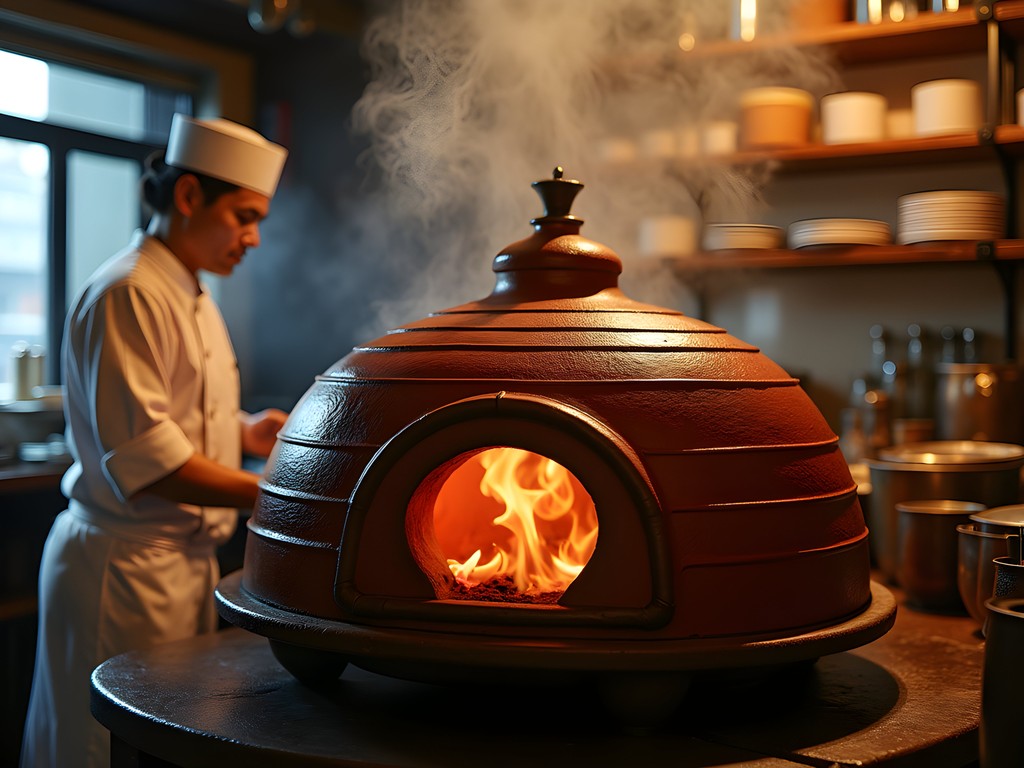
💡 Pro Tips
- Order your Peking duck 24 hours in advance at smaller establishments
- The perfect duck should have skin that shatters like glass when bitten
- Don't waste the duck carcass—ask for duck bone soup to end the meal
Street Food Alleyways: Breakfast Champions & Night Market Heroes
Beijing's street food scene comes alive at dawn when Huguosi Snack Street fills with vendors selling doujiang (soy milk) and youtiao (fried dough sticks). My favorite spot is Wenyu Naiyou Zha Cake, where three generations work side by side making crispy-outside, fluffy-inside pancakes filled with sweet red bean paste. The grandmother uses a specialized spatula that reminds me of my ceramic trimming tools—worn to perfect smoothness through decades of use.
For breakfast on-the-go, I rely on my insulated food container to keep congee hot while exploring morning markets. This little powerhouse keeps food hot for 12 hours, which means I can buy breakfast and still have it warm for mid-morning snacking when energy dips.
When night falls, Donghuamen Night Market might be gone, but Niujie Muslim Market thrives with vendors selling lamb skewers and fresh persimmon cakes. The most fascinating find was Old Wang's Jianbing cart near the Temple of Heaven's east gate. Wang has been making these savory crepes for 30 years, and his specialized jianbing griddle—a smooth, perfectly seasoned iron disc—would make any potter appreciate the beauty of well-used tools.
Don't miss Wangfujing Snack Street despite its touristy reputation. Tucked behind the scorpion-on-a-stick vendors (yes, I tried one, no, I won't again) is Chongqing Noodles, where the chef hand-cuts noodles with a rhythm that any craftsperson would recognize as the flow state we all chase in our work.
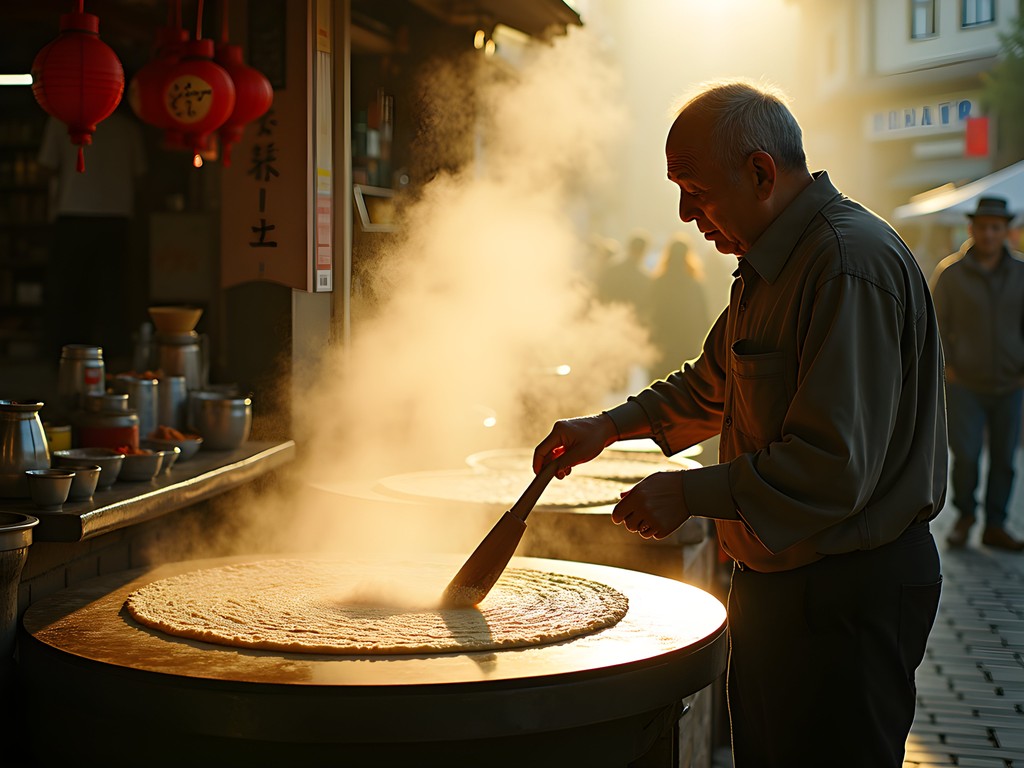
💡 Pro Tips
- Breakfast street food is best between 6-8am when made fresh for locals heading to work
- Bring your own chopsticks—I love my travel chopsticks that fold down to pocket size
- Learn the phrase 'bu la' (not spicy) unless you're prepared for genuine Sichuan heat levels
Imperial Inspirations: Dishes With Royal Heritage
Beijing's imperial culinary traditions fascinate me as much as its ancient pottery techniques. At Najia Xiaoguan in the Dongcheng district, I discovered Manchurian cuisine that once graced imperial tables. Their specialty—crispy, paper-thin shredded potato served on handmade ceramic plates that immediately caught my eye. The manager noticed my interest and showed me their collection of plates designed specifically for each dish—the kind of thoughtful integration of vessel and food that speaks to my ceramicist soul.
For imperial hot pot, Jubaoyuan in the Xuanwu district serves lamb so thinly sliced you can read a newspaper through it (I tested this theory—it's true). Their copper pots are works of art, hammered by hand and developed patinas that tell stories of thousands of meals. I couldn't resist using my folding magnifier to examine the detailed engravings on these heirloom vessels—earning curious looks from fellow diners but an appreciative nod from the owner.
Fangshan Restaurant in Beihai Park occupies buildings where imperial court chefs once trained. Their 'Buddha Jumps Over the Wall' soup arrives in a clay vessel nearly identical to Song Dynasty pieces I've studied. When I commented on this to our server in my broken Mandarin, she returned with the chef who explained they commission replicas of imperial serving vessels from a workshop in Jingdezhen—China's porcelain capital that's next on my ceramics pilgrimage list.
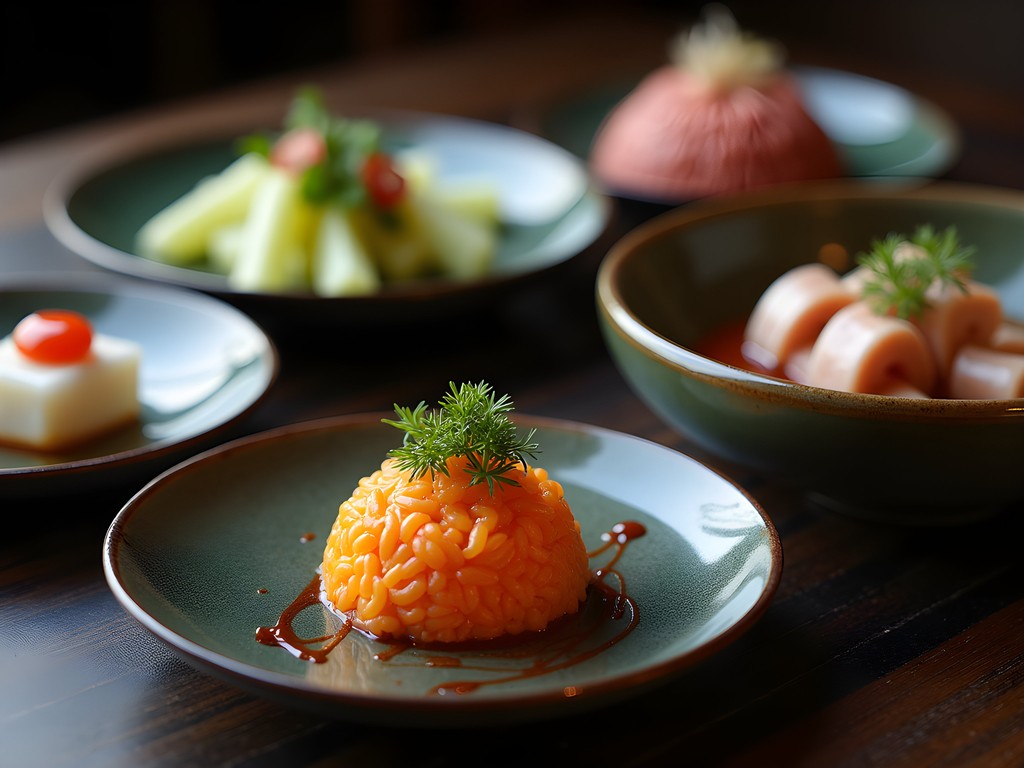
💡 Pro Tips
- Many imperial-style restaurants require reservations 2-3 days in advance
- Ask about the history of specific dishes—servers often have fascinating stories about their royal origins
- Look for restaurants displaying the 'Intangible Cultural Heritage' certification for the most authentic imperial recipes
Tea House Culture: Where Ceramics & Cuisine Converge
As a ceramicist, I couldn't write about Beijing's food scene without mentioning its tea houses, where the vessel is as important as what's inside it. Lao She Teahouse might appear in guidebooks, but locals still frequent it for the clay pot chicken and the tea ceremony demonstrations using handmade Yixing clay teapots that make my potter's heart skip a beat.
For a more intimate experience, Wisteria Tea House in a renovated courtyard home near Houhai Lake serves seasonal tea-infused dishes on Song Dynasty-inspired ceramics. The owner, Master Liu, invited me to examine his personal collection of antique teaware when he overheard me discussing clay bodies with my friend. We spent an hour comparing the thermal properties of different clays and their effects on tea brewing—a conversation that bridged our cultures through shared appreciation of craftsmanship.
The most special discovery was Yuan Cha in the hutongs near Nanluoguxiang, where they pair specific teas with traditional small plates. Their purple clay teapots are designed to enhance particular tea varieties—a concept similar to wine glasses but with centuries more history. I was so inspired that I purchased a gongfu tea set to practice the brewing techniques I learned and incorporate them into my ceramics study.
The manager demonstrated how tea cups are evaluated for quality—holding them to the light to check thickness consistency just as I test my thrown vessels. When he learned about my ceramics background, he brought out cups made by contemporary artists, each with a unique approach to the form—a reminder that even in ancient traditions, there's always room for personal expression.
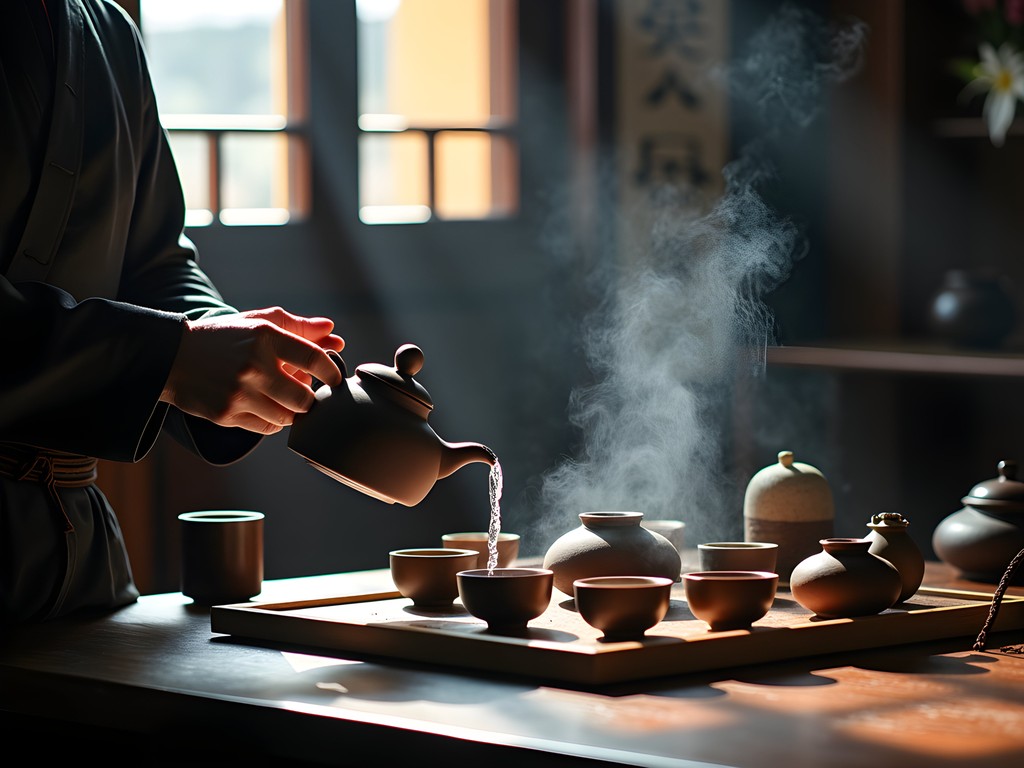
💡 Pro Tips
- Tea house visits are best in mid-afternoon (2-4pm) when locals come for relaxation between meals
- Most tea houses offer 'tea pairings' with small dishes—always say yes to these
- Ask permission before photographing teaware—some pieces may be antiques with special handling requirements
Final Thoughts
As I pack my bags—now considerably heavier with tea sets and ceramic soup spoons I couldn't resist—I'm struck by how Beijing's food culture mirrors what I love about ceramics: the perfect balance of honoring tradition while embracing personal expression. The restaurants where locals queue aren't just serving meals; they're preserving cultural heritage through daily practice, just as I hope to do with the pottery techniques I'm learning.
What began as a quest for authentic food became a journey connecting my ceramic practice to the centuries-old relationship between Chinese culinary arts and pottery. Each meal was served in vessels designed specifically for that dish, each technique honed through generations of practice until it achieved perfection.
So when you visit Beijing, look beyond the tourist menus and Forbidden City crowds. Stand in line with locals outside tiny dumpling shops. Watch the hands of noodle masters who've been perfecting their craft longer than I've been alive. And always, always pay attention to the bowl as much as what's in it—because in Beijing, the vessel and its contents tell a single, beautiful story. As we say in Hawaii, 'A'a i ka hula, waiho ka hilahila ma ka hale'—dare to dance, leave shame at home. Be brave enough to point at what others are eating, join the longest queues, and taste Beijing as locals do.
✨ Key Takeaways
- The best Beijing restaurants are often small, family-run establishments where specific dishes have been perfected over generations
- Understanding the relationship between traditional ceramics and cuisine adds depth to the Beijing food experience
- Morning is the best time to experience authentic local breakfast culture away from tourist crowds
- Tea houses offer insight into both culinary and ceramic traditions in a relaxed setting
- Always carry a translation app or device for meaningful conversations with chefs and artisans
📋 Practical Information
Best Time to Visit
September-October (fall) for comfortable temperatures and harvest ingredients
Budget Estimate
$30-50 per day for food (less if focusing on street food)
Recommended Duration
At least 5-7 days to explore different culinary neighborhoods
Difficulty Level
Intermediate - Language Barrier Can Be Challenging But Pointing And Translation Apps Help


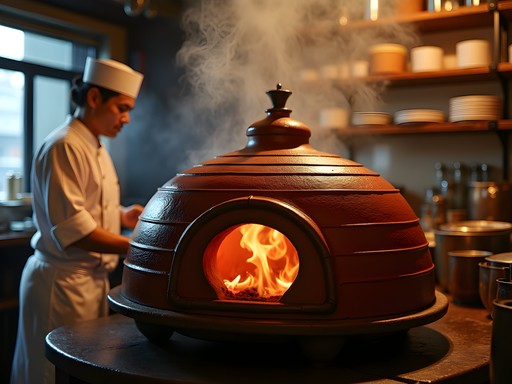
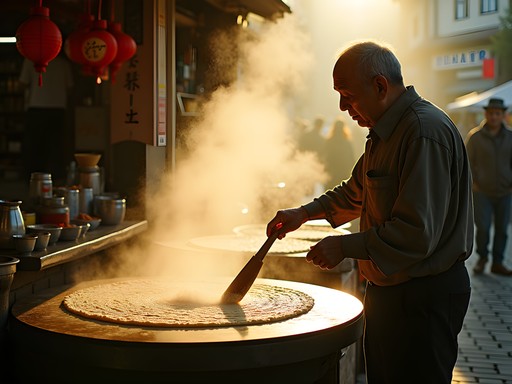





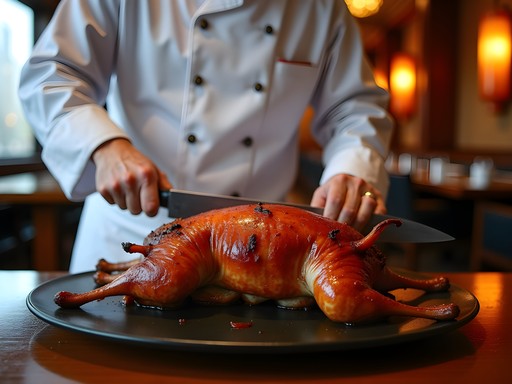






Comments
Megan Martin
Fantastic roundup, Paisley! I was in Beijing for a business conference last year and escaped the hotel restaurants to try local spots. One tip for your readers: visit these authentic places between 2-5pm if possible. I found the queues much shorter, and it's when many locals eat their late lunch. The duck place you mentioned (#4) was incredible - I still dream about that crispy skin! Also, don't miss the breakfast congee at Huguosi Street if you're adding to your list. It's where all the government workers eat before heading to their offices nearby.
Paisley Gonzales
Thanks for the timing tip, Megan! You're absolutely right about the mid-afternoon lull - I should have mentioned that. And Huguosi Street is amazing - I actually have a whole separate post coming about breakfast spots next month!
smartbuddy
This is amazing! I'm vegetarian though - did you find many options for non-meat eaters at these local spots? Or should I stick to Buddhist temple restaurants?
Paisley Gonzales
Great question! Several places in the hutongs actually have excellent vegetarian options - especially the ones serving Buddhist-influenced cuisine. The place in section 3 with the mushroom buns is entirely vegetarian despite not advertising as such. Temple restaurants are fantastic too, but don't miss the local spots!
waveseeker
Just got back from Beijing last week and tried three spots from your list! The jianbing breakfast spot was LIFE CHANGING. We went there every morning for four days straight. The old lady making them recognized us by the third day and started adding extra crispy bits without us asking. Also tried the dumpling place in the hutongs - the wait was long but totally worth it. We used point-it dictionary which was super helpful when the translation app couldn't connect to wifi. Thanks for this amazing guide!
freetime
Oh that's good to know about the dictionary! Was it hard to find these places? Are they marked well in English?
waveseeker
Most aren't marked in English at all! I saved offline maps and dropped pins at all the locations before going. The hutong spots are definitely tricky to find but locals were super helpful when we looked lost.
coolfan
Any good vegetarian options among these places? Going next month!
Paisley Gonzales
Absolutely! The place in Wudaoying Hutong (number 7 on my list) has amazing vegetarian dumplings. Also check out the Buddhist temple food at Guangji Temple - I mentioned it briefly but it deserves more attention. Pure vegetarian and incredible flavors!
freetime
This is making me so hungry! How did you manage with the language barrier at these local spots? I'm planning a trip but worried about ordering when there's no English menu.
Paisley Gonzales
Great question! I used a translation app on my phone and saved pictures of dishes I wanted to try. Most places I visited had at least one person who spoke basic English, and pointing at what other locals were eating worked wonders too! The effort to communicate is always appreciated.
freetime
Thanks so much! That's super helpful. Downloading a translation app now!
FoodieExplorer
Those dumpling photos are incredible! Making me hungry just looking at them!
Nicole Russell
Just got back from Beijing and used this guide extensively! The duck place in the hutongs was INCREDIBLE - so much better than the famous touristy spots. One tip for anyone heading there: I found having a pocket dictionary super useful when my phone died in the middle of ordering at one of these local spots. The breakfast jianbing mentioned in the street food section was my daily ritual - perfect way to start the day exploring!
TravelBug22
How was the language barrier? Did you manage okay with just English?
Nicole Russell
It was challenging at the local spots but pointing and basic phrases got me through! The more touristy places had English menus. Definitely worth venturing to the authentic places though!
summermaster
This blog post saved our Beijing trip! After two days of mediocre hotel recommendations, we followed your list and had the BEST food experiences. The breakfast jianbing was life-changing (seriously!) and that tiny place serving lamb hot pot was incredible - we never would have found it on our own. The owner even showed us how to properly mix the sesame sauce. My husband still talks about those dumplings near Houhai Lake. Thank you for going beyond the usual tourist spots!
sunsetseeker
heading to beijing next month. which of these places is best for vegetarians?
BeijingExpat
The Buddhist temple restaurants mentioned in the Imperial Inspirations section are your best bet - amazing tofu dishes and vegetable creations!
sunsetseeker
perfect, thanks!
BeijingExpat
Great list! As someone living in Beijing for 5 years, I'd add Baoyuan Dumplings to your Northern Comfort section - they do amazing colored dumplings with different fillings. The purple ones with eggplant are incredible!
Paisley Gonzales
Thanks for the tip! I actually tried to get to Baoyuan but ran out of time. Definitely on my list for next visit!
Venture X
Premium card with 2X miles, $300 travel credit, Priority Pass